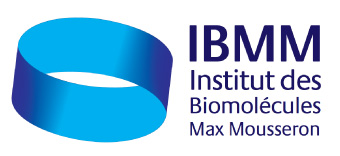Composés biophotoniques et cyclodextrines biomimétiques
Minisymposium Chimie IBMM & ED459
Deux conférences par Chantal
Le Lundi 13 décembre 2021 de 10h30 à 12h
Délégation Régionale CNRS, Amphithéâtre (1919 route de Mende) – jauge limitée, inscription conseillée
Date de début : 2021-12-13 10:30:00
Date de fin : 2021-12-13 12:00:00
Lieu : CNRS amphi DR13 (accès contrôlé)
Intervenant : Dr. Chantal
LCH Laboratoire de Chimie ENS, UMR 5182, CNRS, École Normale Supérieure & Université de Lyon | IPCM Institut Parisien de Chimie Moléculaire, UMR 7201, CNRS, Sorbonne Université
En raison du contexte “covid”, la jauge de l’amphithéâtre est limitée à 40 (vous pouvez retenir votre place auprès de S. Ulrich) ; pour traçabilité sanitaire, les noms de toutes les personnes présentes seront relevés sur place (feuille d’émargement à l’entrée).
Contrôle d’accès au campus CNRS RdM : l’inscription est obligatoire pour les personnes ne disposant pas du badge CNRS, SVP merci de transmettre vos nom, prénom et courriel à Sébastien
Programme
1. Dr. [marron]Chantal
[bleu]Near-infrared chromophores for biophotonics and laser protection[/bleu]
2. Prof. [marron]Matthieu
[bleu]Biomimetic assemblies and catalysis using cyclodextrins[/bleu]
(résumés infra)
Contact local IBMM : Dr. Sébastien
Résumés des conférences
1. Near-infrared (NIR) chromophores for biophotonics and laser protection
Dr. [marron]Chantal
LCH Laboratoire de Chimie ENS, UMR 5182, CNRS, École Normale Supérieure & Université de Lyon
Two-photon absorption is used in different fields of applications such as biology and defense. The design of chromophores for these applications is strongly related to their excited state properties.
During this seminar, our molecular engineering will be presented in the view of (i) biological imaging, and (ii) optical power limiting. Besides the molecular design for each application taking into account different photophysical requirements in addition to the optimisation of biphotonic properties, the compatibility of molecules with their environment will be also addressed in each case.
2. Biomimetic assemblies and catalysis using cyclodextrins
Prof. [marron]Matthieu
Équipe GOBS, IPCM Institut Parisien de Chimie Moléculaire, UMR 7201, CNRS, Sorbonne Université)]
Cyclodextrins are cyclic oligosaccharides used in our daily life as deodorants or excipients. In these applications, they are unfunctionalized or randomly functionalized. The regioselective functionalization of cyclodextrins is a well-established bottle-neck for their use in more sophisticated applications. Over the years we delineated several strategies to access poly-hetero-functionalized cyclodextrins.[1] Based on this ability, we could synthesize modified cyclodextrins that imitate the function of a capsid protein to build an artificial virus.[2] Also inspired by Nature, we encapsulated metals inside the cavity as in metallo-enzymes and used these complexes in catalysis.[3]
[see figure in attached PDF abstract]
References
1. M. Sollogoub, et al, Angew. Chem. Int. Ed. 2008, 47, 7060 ; Angew. Chem. Int. Ed. 2013, 52, 639 ; Nature Commun. 2014, 5, 5354 ; Angew. Chem. Int. Ed. 2021, DOI: 10.1002/anie.202102182.
2. M. Sollogoub, et al, Angew. Chem. Int. Ed. 2012, 51, 487 ; Angew. Chem. Int. Ed. 2014, 53, 7238 ; Angew. Chem. Int. Ed. 2018, 57, 7753.
3. M. Sollogoub, et al, Angew. Chem. Int. Ed. 2013, 52, 7213 ; Chem. 2017, 3, 174 ; Angew. Chem. Int. Ed. 2017, 56, 10821 ; ACS Catal. 2020, 10, 5964–5972 ; Angew. Chem. Int. Ed. 2020, 59, 7591–7597.
